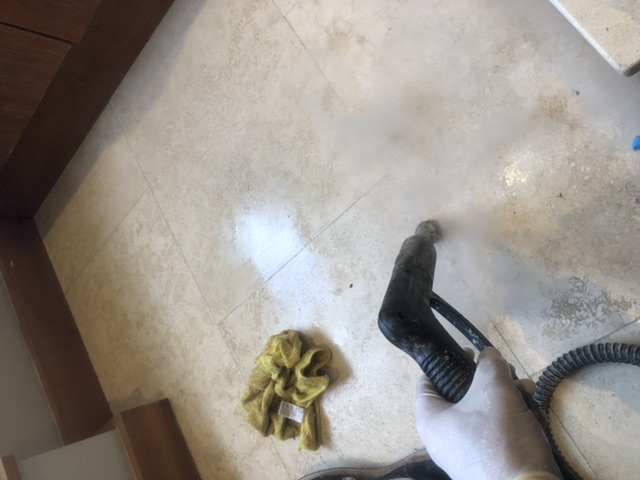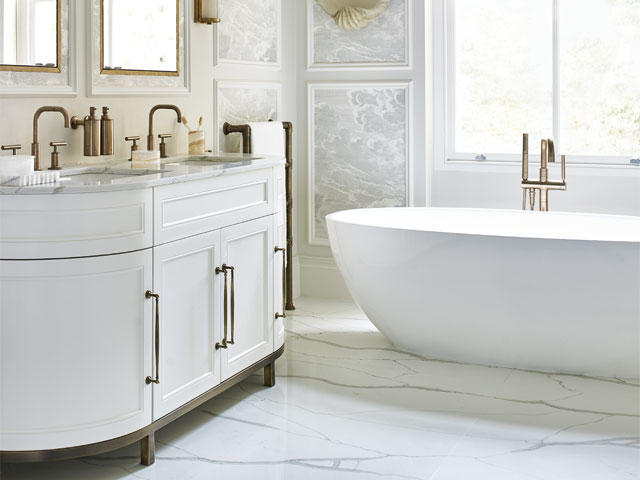Mistakes to Avoid When Cleaning Bathroom Floor

Marble bathroom floors exude luxury and sophistication, but they require careful maintenance to preserve their elegance. Cleaning marble may seem straightforward, but there are common mistakes that can cause lasting damage. This article will highlight crucial errors to avoid to keep your marble bathroom floor looking pristine. By following these guidelines, you’ll maintain the beauty and durability of your marble flooring for years to come.
1. Using Harsh Cleaning Agents
One of the most common mistakes people make is using harsh cleaning agents on marble floors. Marble is a natural stone that is sensitive to acidic substances. Cleaners containing vinegar, lemon juice, or ammonia can etch the marble’s surface, leading to dull spots and damage. Always use pH-balanced, non-acidic cleaners specifically designed for marble. These products will effectively clean your floor without compromising its integrity.
2. Neglecting to Rinse Thoroughly
Another critical error is failing to rinse the marble floor thoroughly after cleaning bathroom marble floor. Residual cleaning agents can leave a film on the surface, attracting dirt and grime. This film can also react with the marble over time, causing discoloration and dullness. After applying a cleaner, make sure to rinse the floor with clean water and dry it with a soft, absorbent towel to ensure no residues remain.
3. Using Abrasive Tools
Abrasive cleaning tools, such as scrubbing brushes or scouring pads, can scratch the surface of marble floors. These scratches can become more pronounced over time, diminishing the floor’s appearance. Instead, use soft cloths or microfiber mops to clean your marble floor. If you need to tackle a tough stain, use a non-abrasive marble cleaner and a soft brush designed for delicate surfaces.
4. Ignoring Spills and Stains
Spills and stains on marble floors should be addressed promptly to avoid long-term damage. Marble is porous and can absorb liquids, which may lead to staining if not cleaned immediately. For spills, blot the area with a clean, dry cloth rather than wiping it, as wiping can spread the liquid. Use a marble-specific stain remover for any stubborn stains, and always follow the manufacturer’s instructions for best results.
5. Over-Wetting the Floor
Marble floors should not be overwet during cleaning. Excess moisture can seep into the stone and weaken its structure over time. When cleaning, use a damp mop rather than soaking the floor. Be sure to dry the floor thoroughly after cleaning to prevent water from settling into the stone and causing damage.
6. Using Too Much Cleaning Solution
Using too much cleaning solution can leave a residue on the marble floor, which can attract dirt and grime. It’s essential to follow the recommended dilution ratios provided by the cleaner’s manufacturer. A small amount of solution, combined with a damp mop, is usually sufficient for effective cleaning. Overuse of cleaning products can also increase the risk of residue buildup, leading to a lackluster appearance over time.
7. Not Protecting the Floor
Marble floors can be susceptible to damage from heavy furniture and other objects. Failing to use protective pads or furniture coasters can lead to scratches and dents. Ensure that all furniture legs have felt or rubber pads to prevent any potential damage to your marble floor. Additionally, place mats or rugs in high-traffic areas to reduce wear and tear.
8. Skipping Regular Maintenance
Regular maintenance is crucial for preserving the beauty of your marble floor. Skipping routine cleaning or neglecting to seal the marble can lead to significant problems. Marble floors should be sealed periodically to protect them from stains and moisture. Follow a maintenance schedule and consult with a professional if you’re unsure about the sealing process.

9. Using Unsuitable Floor Mats
Floor mats can be a helpful addition to a marble bathroom, but they must be chosen carefully. Mats with rubber backing can trap moisture and cause discoloration or damage to the marble over time. Opt for mats with breathable, non-slip backing to ensure that moisture evaporates rather than becoming trapped against the floor.
10. Forgetting to Check pH Levels
Maintaining the correct pH balance is vital for marble floors. Cleaning solutions with incorrect pH levels can erode the marble surface or cause discoloration. Always use cleaning products specifically formulated for marble and check the pH level of any new products before use. This step will help ensure that your cleaning routine is both effective and safe for your marble floor.
Conclusion
By avoiding these common mistakes, you can maintain the elegance and longevity of your marble bathroom floor. Proper cleaning techniques and regular maintenance are key to preserving the beauty of this luxurious material. Remember to use gentle, pH-balanced cleaners, avoid abrasive tools, and promptly address spills and stains. With these tips, your marble floor will remain a stunning feature in your bathroom for years to come.



